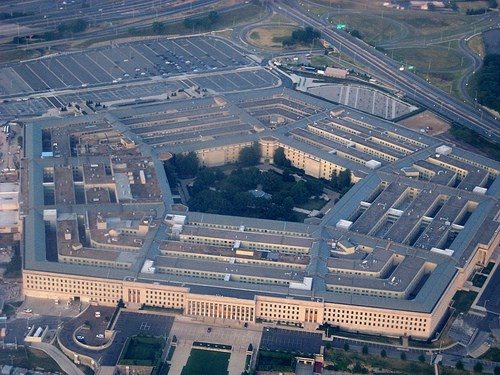The Defense Department has revamped its approach to communicating and interacting with the defense industrial base after applying lessons learned from previous economic downturns, a senior defense official said here today.
Brett B. Lambert, deputy assistant secretary of defense for manufacturing and industrial base, spoke during an Atlantic Council panel session.
Lambert said he was asked in 2009 to figure out a perception that DOD’s communication with the defense industry was lacking.
A lot of people thought it was political, he said, but that proved not to be the case.
“It became obvious to me very, very quickly it had nothing to do with politics or parties,” he said. “It had everything to do with 10 years of double-digit, year-over-year growth. There was no need to talk to each other. Everyone was happy. When we had a program that was bleeding, we cauterized the wound with money, because we had it. Expediency was the most important thing.”
Lambert said the defense industry delivered what was asked of it, but that over time, the interaction between DOD and the industrial base broke down.
“So we came in with strategic guidance to try to re-establish, if you will, communications — specifically with industry,” he said. “But I came in with another specific task.”
The deputy assistant secretary said then-Defense Secretary Robert M. Gates was aware of the coming downturn. “He knew well the times of double digit growth were over,” Lambert said. “And so we knew we were entering a time of downturn.”
With that in mind, Lambert said, officials reviewed the four previous downturns’ effects on the industrial base.
“Basically we were 0-4,” he said. “We got it wrong in every case. We got it wrong for a variety of different reasons, so we went back to look at what we could do better.”
That effort made clear the need to engage industry up front, Lambert said. “And we needed to understand how dramatically the industry has changed since the last downturn — the post-Cold War downturn,” he added.
Lambert said the department reviewed lessons learned and crafted a plan, agreed to by Deputy Defense Secretary Ashton B. Carter, and Frank Kendall, undersecretary of defense for acquisition, technology and logistics, to act on those lessons.
“One: better communications,” he said. “We’re doing that through outreach — through working with organizations like the Atlantic Council to communicate, to get our ideas out, and to get feedback.”
The Defense Department received more than 500 inputs from industry from the “Better Buying Power 1.0” initiative, Lambert said.
“Many were implemented,” he added. “We have even more industry inputs for Better Buying Power 2.0. And they are being reviewed, and many of our changes you’ll see coming out in the final document will reflect the industry’s comments.”
The second element, he said, places more emphasis on internal mechanisms and what the Defense Department could do better in working with industry partners, such as educating the DOD workforce on what those partners are all about.
“The third thing I was asked to take on was policies that were both enduring and flexible,” Lambert said, noting that a new Defense Department acquisition instruction will be issued in the coming weeks. Lambert said the new instruction represents a new way to look at industrial base analysis and policy, and that every major program will be affected.
“Instead of thinking about industrial base as an afterthought once program decisions are made,” he added, “industrial base will now be … part of major decisions.”
Lambert said he believes the department now is well prepared, despite changes in the defense industrial base over the past decade.
“Moving forward, I feel comfortable that we have the tools to deal with some of the more complicated industrial base issues, including the transaction issues we’re going to see,” Lambert said.
“At the same time,” he added, “cuts are coming across the board, or likely to come across the board to the whole department,” referring to a mechanism in budget law that will take effect March 1 unless Congress comes up with an alternative plan.
“Those cuts will also come to the very institutions we’re trying to set up to mitigate the effects of those cuts,” Lambert said, “so on that regard, I’m not terribly optimistic right now.”










